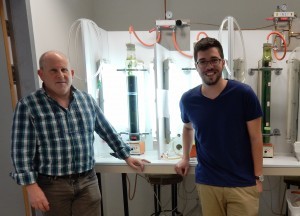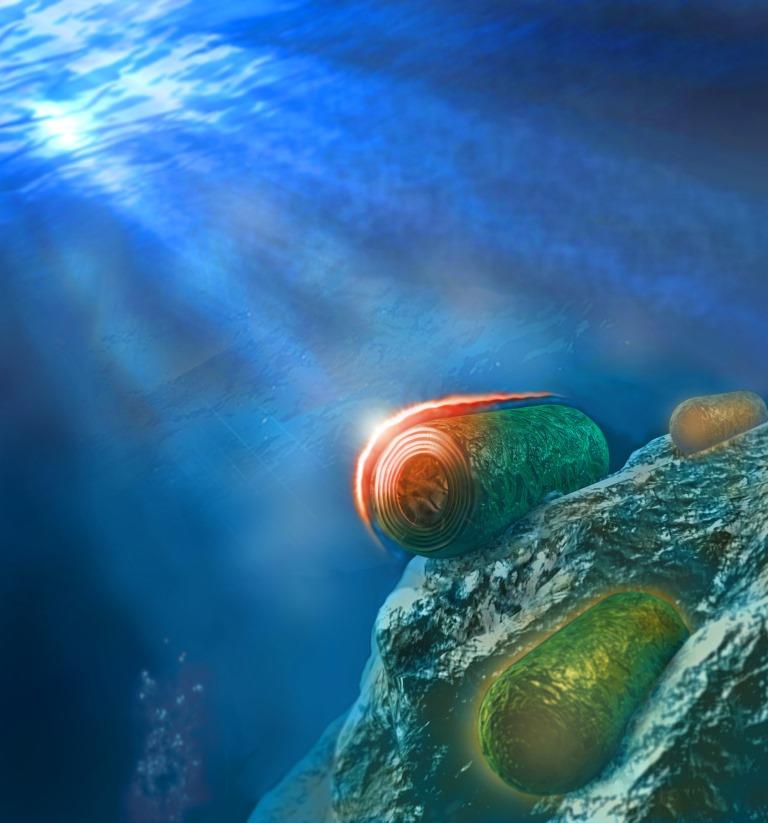Cyanobacteria’s Automatic Sunshade
A study by Prof. Noam Adir of the Technion: this is how bacteria protect their photosynthetic system from overexposure

Prof. Noam Adir (on the left) and doctoral student Dvir Harris of the Technion Schulich Faculty of Chemistry
Photosynthesis, which we are familiar with from the plant world, is essential to the animal kingdom – not only for organisms that perform photosynthesis themselves, but for all living things. This is because even animals that do not perform photosynthesis consume the primary product of photosynthesis – glucose.
Due to the importance of this process, these organisms have developed mechanisms that protect them from overexposure to sunlight. Just as film in pre-digital cameras can be overexposed, natural photosynthetic systems are also liable to become impaired as a result of overexposure, leading to the death of the organism.
One of these defense mechanisms has now been revealed in a study conducted by Prof. Noam Adir and doctoral student Dvir Harris of the Technion Schulich Faculty of Chemistry, in collaboration with Dr. Diana Kirilovsky and her laboratory at I2BC-CEA, in France. The article was published in the scientific journal PNAS.
The defense mechanism was deciphered in cyanobacteria (formerly known as “blue green algae”). The main player in this mechanism is the protein OCP – a protein that modifies its structure and color in response to intense light. This change blocks the flow of energy that reaches the center of the photosynthetic reaction by means of a reaction between the active species of OCP and phycobilisome (PBS) the protein complex that functions as a light harvesting antenna in the cyanobacteria.
“In this study we discovered how the OCP blocks the energy,” explains Prof. Adir. “In effect, the protein acts as a biological switch. In response to strong light, part of the protein penetrates into the PBS, changes the PBS structure, thereby diverting the flow of energy to the reaction centers. According to experiments done by the Kirilovsky lab, this defense mechanism blocks more than 90% of the sun’s radiation. As soon as the radiation diminishes, the protein returns to its normal state and the flow of energy resumes.”

Marine and freshwater cyanobacteria protect themselves from over-excitation in high-light by activating the Orange Carotenoid Protein (OCP). The OCP is activated by strong light illumination, changing from its orange to red form. The picture depicts three bacteria, one in full sunlight (top, reddish), one in shade (bottom, orange hue) and one in the middle. Harris et al. PNAS 2016 have proposed a mechanism by which the after activation, the N-terminal domain of the OCP burrows in between units of the Phycobilisome antenna complex, thereby diminishing the flow of energy to the reaction centers


